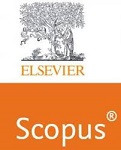Histogram Oriented Gradients-Gabor Hybrid Model for Feature Extraction for Enhanced Finger Vein Recognition Accuracy and Robustness
Keywords:
Finger vein, biometrics, feature extraction, algorithm, HOG, Gabor filterAbstract
Finger vein biometrics has gained significant attention due to its unique and reliable characteristics for personal identification. Feature extraction plays a crucial role in finger vein recognition systems by capturing discriminative patterns from finger vein images/maps. In this paper, we propose a hybrid feature extraction algorithm that combines the Histogram of Oriented Gradients (HOG) and Gabor filter techniques to enhance the representation of finger vein features. The HOG algorithm is known for its effectiveness in capturing local gradient information, while Gabor filters are capable of extracting fine texture details and orientation information. By integrating these two methods, we aim to leverage their complementary strengths and improve the discriminative power of the extracted features.
The proposed algorithm follows a multi-stage process. Firstly, the finger vein images/maps are preprocessed to enhance their quality and remove noise. Next, the HOG algorithm is applied to compute gradient orientations within local image patches, capturing the local texture and edge information. Simultaneously, Gabor filters are convolved with the preprocessed images to extract texture and orientation features at different scales and orientations. The resulting HOG and Gabor features are then concatenated to form a combined feature vector.
To evaluate the performance of the proposed hybrid algorithm, extensive experiments are conducted on a finger vein dataset consisting of a large number of samples. The extracted features are utilized for recognition tasks using various classification algorithms, such as Support Vector Machines (SVM) and Neural Networks (NN). The experimental results demonstrate that the hybrid HOG and Gabor filter algorithm outperforms individual feature extraction techniques, achieving higher accuracy and robustness in finger vein recognition. The proposed hybrid feature extraction algorithm provides a promising solution for effective finger vein biometrics. It harnesses the complementary nature of HOG and Gabor filters to capture both local gradient information and fine texture details, resulting in improved feature representation. The experimental results validate the effectiveness of the proposed approach and its potential for real-world applications in secure authentication systems, access control, and personal identification.
Downloads
References
Alias, N. A., & Radzi, N. H. M. (2016). Fingerprint classification using Support Vector Machine. Proceedings of the 2016 5th ICT International Student Project Conference, ICT-ISPC 2016, 105–108. https://doi.org/10.1109/ICT-ISPC.2016.7519247
Alwan, H. B., & Ku-Mahamud, K. R. (2020). Cancellable Face Biometrics Template Using AlexNet. Communications in Computer and Information Science, 1174 CCIS, 336–348. https://doi.org/10.1007/978-3-030-38752-5_27/COVER
Bandara, A. M. R. R., Rajarata, K. A. S. H. K., & Giragama, P. W. G. R. M. P. B. (2018). Super-efficient spatially adaptive contrast enhancement algorithm for superficial vein imaging. 2017 IEEE International Conference on Industrial and Information Systems, ICIIS 2017 - Proceedings, 2018-January, 1–6. https://doi.org/10.1109/ICIINFS.2017.8300427
Barde, S., & Agrawal, A. (2019). Classification of biometrics and implementation strategies. Advances in Biometrics: Modern Methods and Implementation Strategies, 307–332. https://doi.org/10.1007/978-3-030-30436-2_15/COVER
Cherrat, E., Alaoui, R., & Bouzahir, H. (2020). Convolutional neural networks approach for multimodal biometric identification system using the fusion of fingerprint, finger-vein and face images. PeerJ Computer Science, 2020(1), 1–15. https://doi.org/10.7717/PEERJ-CS.248/
Chiou, S. Y. (2013). Secure method for biometric-based recognition with integrated cryptographic functions. BioMed Research International, 2013. https://doi.org/10.1155/2013/623815
Choi, J. H., Song, W., Kim, T., Lee, S.-R., & Kim, H. C. (2009). Finger vein extraction using gradient normalization and principal curvature. Image Processing: Machine Vision Applications II, 7251, 725111. https://doi.org/10.1117/12.810458
Do, T. N. (2021). Training Neural Networks on Top of Support Vector Machine Models for Classifying Fingerprint Images. SN Computer Science, 2(5), 1–12. https://doi.org/10.1007/S42979-021-00743-0/METRICS
: Jie Zhou, Y. W. (2018). Biometric Recognition. In J. Zhou, Y. Wang, Z. Sun, Z. Jia, J. Feng, S. Shan, K. Ubul, & Z. Guo (Eds.), 13th Chinese Conference, CCBR 2018, Urumqi, China, August 11-12, 2018, Proceedings (Vol. 10996). Springer International Publishing. https://doi.org/10.1007/978-3-319-97909-0
Kauba, C., & Uhl, A. (2020). An Available Open-Source Vein Recognition Framework. Advances in Computer Vision and Pattern Recognition, 113–142. https://doi.org/10.1007/978-3-030-27731-4_4/FIGURES/6
Lee, S., Kim, J., & Moon, N. (2019). Random forest and WiFi fingerprint-based indoor location recognition system using smart watch. Human-Centric Computing and Information Sciences, 9(1), 1–14. https://doi.org/10.1186/S13673-019-0168-7/FIGURES/10
Manisha, & Kumar, N. (2020). Cancelable Biometrics: a comprehensive survey. Artificial Intelligence Review, 53(5), 3403–3446. https://doi.org/10.1007/s10462-019-09767-8
Marcel, S., Nixon, M. S., & Li, S. Z. (n.d.). Handbook of biometric anti-spoofing : trusted biometrics under spoofing attacks. 281.
Matsuda, Y., Miura, N., Nagasaka, A., Kiyomizu, H., & Miyatake, T. (2016). Finger-vein authentication based on deformation-tolerant feature-point matching. Machine Vision and Applications, 27(2), 237–250. https://doi.org/10.1007/S00138-015-0745-3
Mohd Asaari, M. S., Suandi, S. A., & Rosdi, B. A. (2014). Fusion of Band Limited Phase only Correlation and Width Centroid Contour Distance for finger based biometrics. Expert Systems with Applications, 41(7), 3367–3382. https://doi.org/10.1016/J.ESWA.2013.11.033
Neeru, N., & Kaur, L. (2016). Face recognition based on LBP and CS-LBP technique under different emotions. 2015 IEEE International Conference on Computational Intelligence and Computing Research, ICCIC 2015. https://doi.org/10.1109/ICCIC.2015.7435803
Peng, J., El-Latif, A. A. A., Li, Q., & Niu, X. (2014). Multimodal biometric authentication based on score level fusion of finger biometrics. Opt Int J Light Electron Optics, 125(23), 6891–6897. https://doi.org/10.1016/j.ijleo.2014.07.027
Ku-Mahamud, 2020Ross, A., & Jain, A. (2003). Information fusion in biometrics. Pattern Recogn Lett, 24(13), 2115–2125. https://doi.org/10.1016/s0167-8655(03)00079-5
Sarker, G., & Ghosh, S. (2021). Biometric-based unimodal and multimodal person identification with CNN using optimal filter set. Innovations in Systems and Software Engineering, 17(2), 157–166. https://doi.org/10.1007/S11334-020-00381-4/METRICS Jie Zhou, 2018).
Sharma, R. P., Anshul, A., Jha, A., & Dey, S. (2020). Investigating Fingerprint Quality Features for Liveness Detection. Lecture Notes in Computer Science (Including Subseries Lecture Notes in Artificial Intelligence and Lecture Notes in Bioinformatics), 11987 LNAI, 296–307. https://doi.org/10.1007/978-3-030-66187-8_28/COVER
Shende, P., & Dandawate, Y. (2021). Convolutional neural network-based feature extraction using multimodal for high security application. Evolutionary Intelligence, 14(2), 1023–1033. https://doi.org/10.1007/s12065-020-00522-5
Stefanidi Anton, T. A. P. A. (2020). Modification of VGG Neural Network Architecture for Unimodal and Multimodal Biometrics.
Subramanyam, A. V., & Emmanuel, S. (2012). Video forgery detection using HOG features and compression properties. 2012 IEEE 14th International Workshop on Multimedia Signal Processing, MMSP 2017 - Proceedings, 89–94. https://doi.org/10.1109/MMSP.2012.6343421
Syarif, M. A., Ong, T. S., Teoh, A. B. J., & Tee, C. (2017). Enhanced maximum curvature descriptors for finger vein verification. Multimedia Tools and Applications, 76(5), 6859–6887. https://doi.org/10.1007/S11042-016-3315-4
Yang, T., Li, R., Liang, N., Li, J., Yang, Y., Huang, Q., Li, Y., Cao, W., Wang, Q., & Zhang, H. (2020). The application of key feature extraction algorithm based on Gabor wavelet transformation in the diagnosis of lumbar intervertebral disc degenerative changes. Plos One, 15(2), e0227894–e0227894. https://doi.org/10.1371/JOURNAL.PONE.0227894
Downloads
Published
How to Cite
Issue
Section
License

This work is licensed under a Creative Commons Attribution-ShareAlike 4.0 International License.
All papers should be submitted electronically. All submitted manuscripts must be original work that is not under submission at another journal or under consideration for publication in another form, such as a monograph or chapter of a book. Authors of submitted papers are obligated not to submit their paper for publication elsewhere until an editorial decision is rendered on their submission. Further, authors of accepted papers are prohibited from publishing the results in other publications that appear before the paper is published in the Journal unless they receive approval for doing so from the Editor-In-Chief.
IJISAE open access articles are licensed under a Creative Commons Attribution-ShareAlike 4.0 International License. This license lets the audience to give appropriate credit, provide a link to the license, and indicate if changes were made and if they remix, transform, or build upon the material, they must distribute contributions under the same license as the original.





